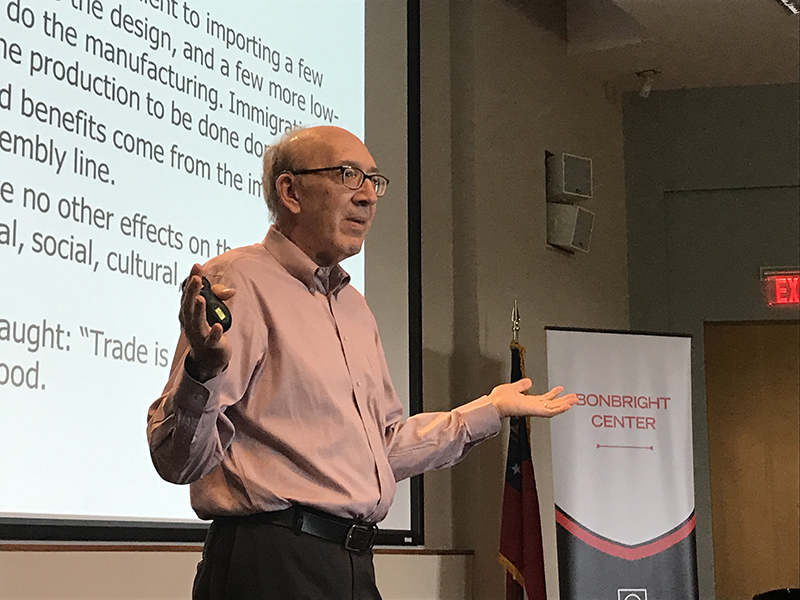Be wary of immigration policies that are justified by economic data — they never tell the whole story.
That was the message delivered by George Borjas, a Harvard University labor economist, at the Bonbright Center Public Lecture on Sept. 27.
“As economists, we’ve all been taught—some would say brainwashed—into thinking that trade is good. Therefore, since immigration is like trade, immigration is good. That’s certainly the gut reaction I had when I first thought about immigration,” he said. “But that’s not the correct way to think about it. Immigrants are not widgets. They’re people. That is the crucial thing that the economic perspective on immigration gets wrong.”
Borjas is Robert W. Scrivner Professor of Economics and Social Policy at Harvard’s Kennedy School of Government. He’s written more than 150 papers and several books focused on immigration. The lecture was co-sponsored by the James C. Bonbright Center for the Study of Regulation, housed in the Economics Department of the Terry College of Business, and the David McCord Wright Lecture Series.
The thrust of his talk concerned the false narratives that crop up around immigration data from every side. Politicians and policy wonks tend to ignore inconvenient figures and make assumptions that will support their argument. Different interpretations of the same data lead to substantially divergent outcomes.
But, Borjas said, the net impact of immigration on an economy is probably a wash because immigrants bring both positives (supplying labor and paying taxes) and negatives (lowering wages and consuming public goods).
“Given the fact that some people gain and some people lose, when you decide any kind of immigration policy what you’re really doing is picking winners and losers,” he said. “Any policy you pick comes with decisions about how much you care about immigrants versus natives, or how much you care about this group of natives versus that group of natives. Every policy is going to discriminate against a group and you have to pick which group you want to benefit.”
This is true for both highly and lowly skilled immigrants, Borjas said, and gave an example of doctors immigrating from downtrodden countries to developed nations.
“What happens when doctors migrate here? Medical services for us get better. There are lower wait times. The doctors themselves see a benefit, otherwise they would go back. But think about this: What about the people left behind? Should we care about them at all?” he asked. “When the doctors come here, they leave large segments of their home population behind with less access to medical care. Should that be something that affects our policies on immigration?”
Such examples show that immigration policies shouldn’t be based on data, Borjas said.
“It’s impossible to make a policy that benefits everyone,” he said. “I’ve spent a lot of my life working on this and there really isn’t that much policy that I can tell you should be implemented. In the end, it’s not about numbers and graphs. It’s about what kind of country do we want to be and what kind of people do we want to be. And that’s what immigration policy should be about.”

